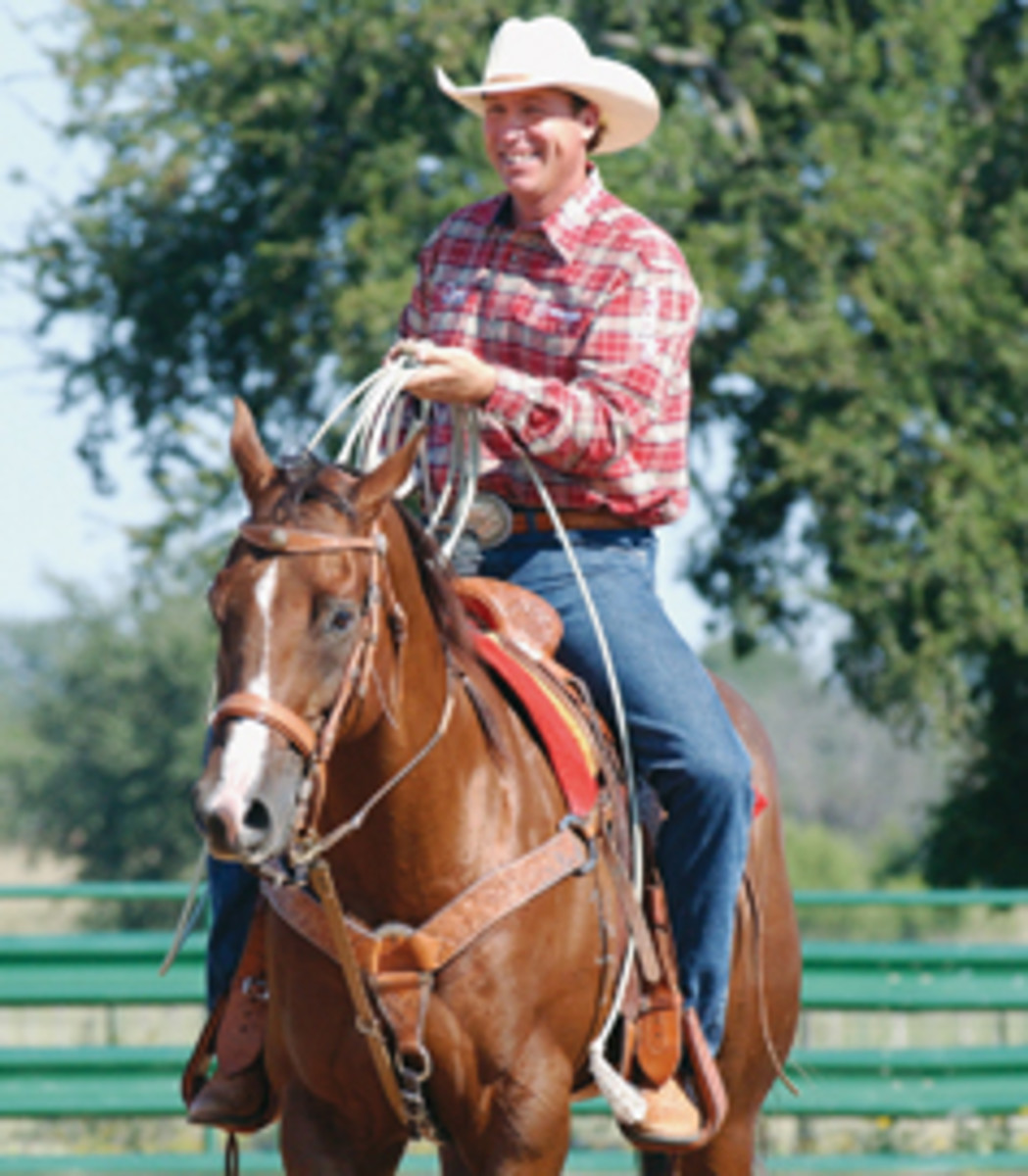[Originally from 2006 Spin to Win Rodeo]

You can look back on a lot of top guys’ careers, and basically their careers have revolved around outstanding horses, whether they happened to fit those particular people or were just that good. My first really good horse, Bullwinkle, was the horse I rode for our first few championships. Back then, there were a lot of jackpots and I used him hard at the ropings and rodeos. I even made practice runs on him. He was really, really tough. Times were different then. You hauled one horse and rode him all year long. Bullwinkle was my No. 1 rodeo horse. He wasn’t the best jackpot horse, but back then we didn’t have the luxury of hauling three or four horses around. If you’re one of those people who has one horse, or even two, horse management is critical. I’ve been around long enough to know that now. Once Bullwinkle was done and I started searching for others, I realized that those good ones don’t come around the corner every day. That horse was about half renegade, and you had to keep him ridden down. But he was really good at his job, and I really missed him when he was done.
The top guys in our industry now know how important these horses are. That’s why the good ones are so expensive. The awesome horses are so unique and hard to find. So when you do find one that fits you, you better take care of him because he needs to last. You need to manage his runs and his rest, and you don’t want to overhaul him or use him in bad conditions or in the practice pen. The only time I practice on a good one is to work on something very specific if he needs it.
You need to maintain the good ones to keep them working at the very top level. That might mean getting off of one, even at a good rodeo, if it’s two feet deep in mud. Sometimes you have to make a short-term sacrifice and ride your second-stringer, because it’s in your long-term interest.
When we were going to 120 rodeos a year and the steers weighed 650 pounds, we were riding one horse. Now we realize the toll it takes to haul one straight through from Salinas (Calif.) to Cheyenne (Wyo.), so most guys keep at least two horses out there. The top guys are always looking for more horses, and usually have at least three to five good ones at all times.
Part of taking care of your horse is managing him so he’ll last. You have to keep him in shape, feed him good, take care of his feet, worm him regularly, stay current on his shots and take care of his teeth. If a horse shakes his head, there’s a good chance he’s either overbridled or his teeth are hurting him. Make sure the saddle fits, so his back doesn’t hurt. You can’t underuse a horse, either, or he won’t perform up to par. It depends on the horse, but a lot of horses don’t do well if you baby them too much. Overweight horses won’t work as well, either. That’s when they hurt themselves or get too chargy. If a horse isn’t fit, he’ll start figuring out shortcuts to compensate for not being in shape.
You have to analyze every horse and design a management program that works for him. Some need time off, others do terrible things when they don’t get used. More runs in the practice pen is not always the answer. Horses can’t talk and tell you they aren’t pulling because they’re in pain, so you need to pay attention and look for the signs. Listen to what they’re trying to tell you. We didn’t rely on veterinarians much early on in my career. About the only time you’d take one to the vet back then was if he couldn’t walk or needed stitches. These days, it’s just smart to take the best care of your horses. Have a vet you really believe in check him out and make recommendations. We don’t think about our own health when we’re young and don’t have aches and pains. But as we age, we need to take better care of ourselves. Horses are the same way, and it only makes sense that they’ll work better if they’re pain-free. These horses are such great athletes, and we ask them for so much every run. A lot of behavior problems can actually be explained by pain and horses trying to get away from that.
A lot of people have multiple horses for different conditions. I have Barney, who has a bad knee and is getting up in age (he’s 17 now). I’ve never chased a steer in the practice pen for myself on him. I bet in the three and a half years I’ve owned him I haven’t run 25 practice steers on him, because he doesn’t need it. And of those, I’ve only turned about 10 steers for my heeler on him. The rest of the time I just busted him up there, roped the steer and followed him to the back end, just to keep him freed up. I pony Barney a lot, and don’t even gallop him like I do other horses, because of his knee. The way I see it, every time I chase a steer down that arena it’s one less run I’ll get out of him in competition. And I only ride him at big-money jackpots. If I have a barrier or a leg in the first round, I’ll get on another horse so I don’t waste a run on him. This is all just common sense, but it’s amazing how many people don’t know what they’ve got in the trailer.










